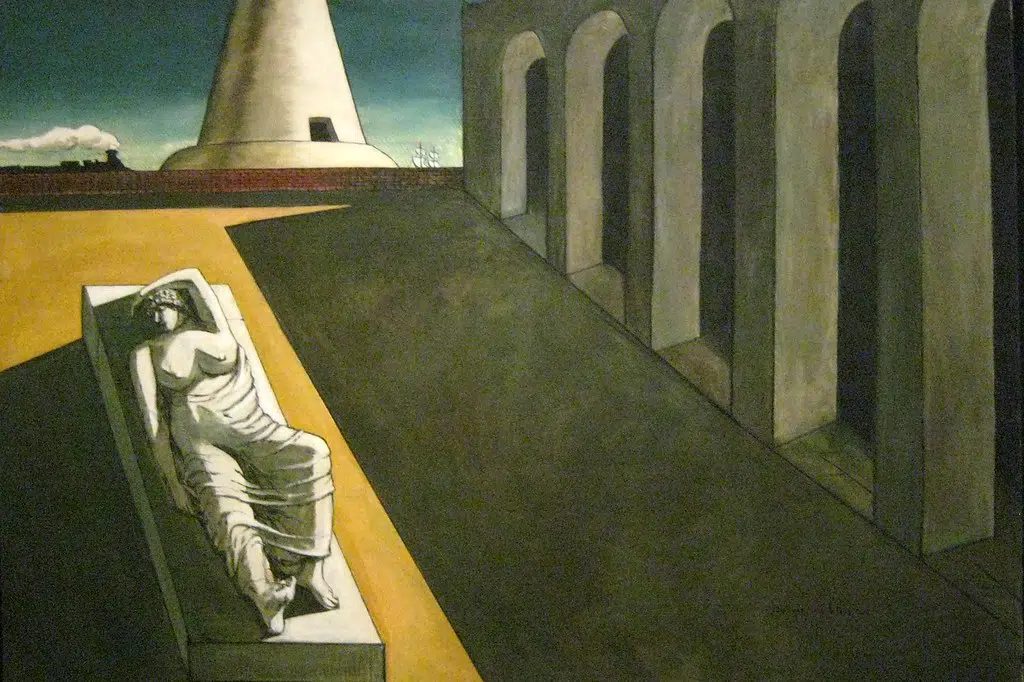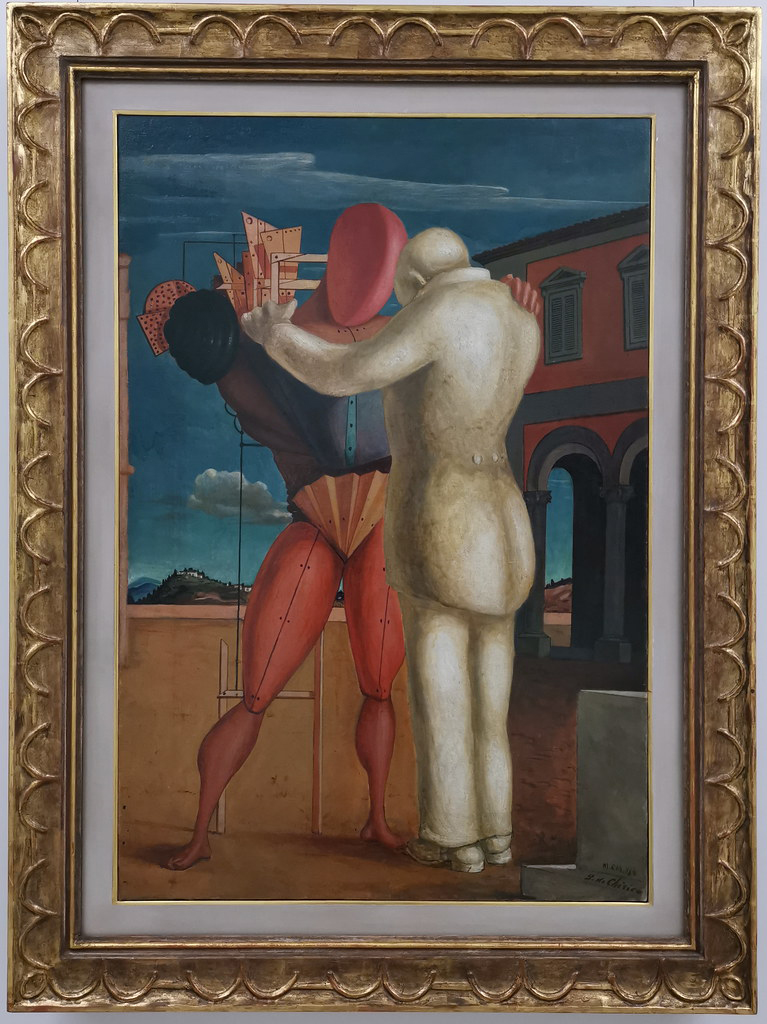
Giorgio de Chirico is considered one of the foremost surrealist painters of the 20th century. His work is in the collections of the Museum of Modern Art in New York, the Guggenheim Museum, and the Metropolitan Museum of Art among many others.
He is often cited as a crucial and unique artist of the surrealist movement that rose to prominence in the early 1900s. He coined his own term for the aesthetic language he was developing, one that draws on a philosophical concept from ancient Greece, namely metaphysical art.
It’s no surprise that de Chirico looked to the origins of philosophy and ancient Greece for the language to describe his canvasses. His imagery is overwhelmingly concerned with Greek mythology and Greek thought, as well as the Roman arcades, but this preoccupation with the stories, figures, and icons of the birthplace of Western philosophy is also not surprising for another reason—Greece is de Chirico’s birthplace, as well.
Born in Volos in 1888 to Italian parents, de Chirico spent his formative years in Greece, eventually studying painting at Athens Polytechnic. He explored many figures from Greek mythology. His study of Ariadne, which sold last year for $15.8 million, is one of his most famous works, but one story was particularly close to his heart—that of the Argonauts.
Volos is the city from which Jason set off on the Argos to find the Golden Fleece. De Chirico paid homage to the myth in one of his early works, Farewell to the Departing Argonauts, which was created before the artist developed the style he would later become known for. However, it includes key features of his later works, notably in the tunnel-like perspective of the background.
Chirico was deeply affected by the environment he grew up in as a child on a purely sensorial level. As he grew into an adult and established himself as an artist, he became fascinated by the story of the Argonauts in which Volos plays a key role and sought to mediate his relationship with Volos through a connection to the collective knowledge and imagery of the myth, using its themes and symbols to articulate his metaphysical vision of reality.
The artist wrote in his memoirs that “…all of those spectacles of exceptional beauty that I saw in Greece as a boy…and that are the most beautiful I have ever seen to this day, affected me so deeply, they were so powerfully impressed in my soul and in my thoughts.”
Giorgio de Chirico connected to his birthplace in Greece through metaphysical art
The philosophical concept of metaphysics explores the relationship between how our minds experience the world and what the world itself consists of. Chirico’s defining style featured evocatively rendered scenes in which classical Roman architecture stretched out into perspectives and compositions punctuated by contorted mannequins and classical sculptures of mythological icons, as well as inanimate objects and articles of clothing.
These scenes seemed to interrogate the relationship people had with the transformation of myths and history into sculpture and images. De Chirico had a meta relationship to art, seeing it as giving mythology and history a form to live on through. To highlight this paradoxical reanimation of the long-dead annals of history, the protagonists of his canvases were never living. He utilized contorted mannequins as a substitute for human beings in his work.

Through staging these encounters with jarring, precisely constructed spatial illusions, de Chirico made the viewer especially aware of the dreamlike, distorted nature contained in the moment of experiencing art while simultaneously preserving this awareness in a world populated with the ancient figures and concepts that introduced such philosophical acts of recognition.
In 2010, a Greek film called Giorgio de Chirico: Argonaut of the Soul was produced exploring Chirico’s life and work.
See all the latest news from Greece and the world at Greekreporter.com. Contact our newsroom to report an update or send your story, photos and videos. Follow GR on Google News and subscribe here to our daily email!



